

![]()


Arizona Hikes, Travels, Tours
Pictures, Photos, Images, & Reviews.
Congress, Arizona. Ghost Town.
Attractions And Surrounding Communities.
George & Eve DeLange.
Google Map To Congress, Arizona.
View Larger Map
Google Map To The Old Congress Gold Mine.
Congress, Yavapai County, Arizona.
View Larger Map
Google Map To The Old Congress Pioneer Cemetery.
Not Obvious On The Map!
Congress, Yavapai County, Arizona.
View Larger Map


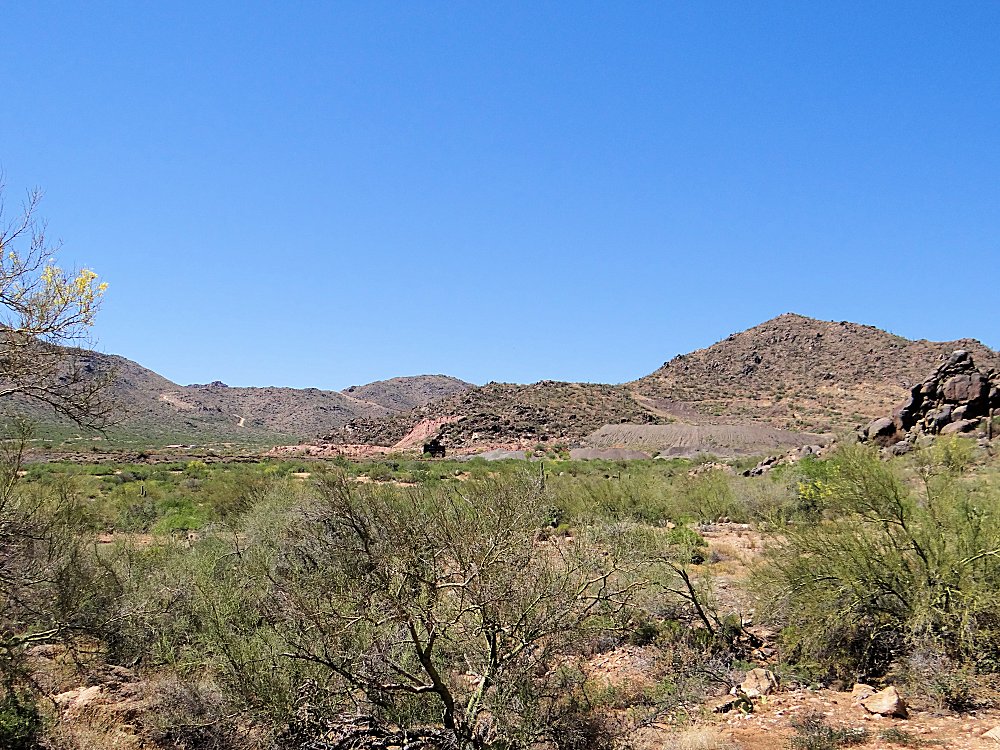 |
| Congress Gold Mine. At The "Mill Town." Congress, Arizona. The Gold Ore Stamp Mill Can Be Seen In The Distance. |
|---|
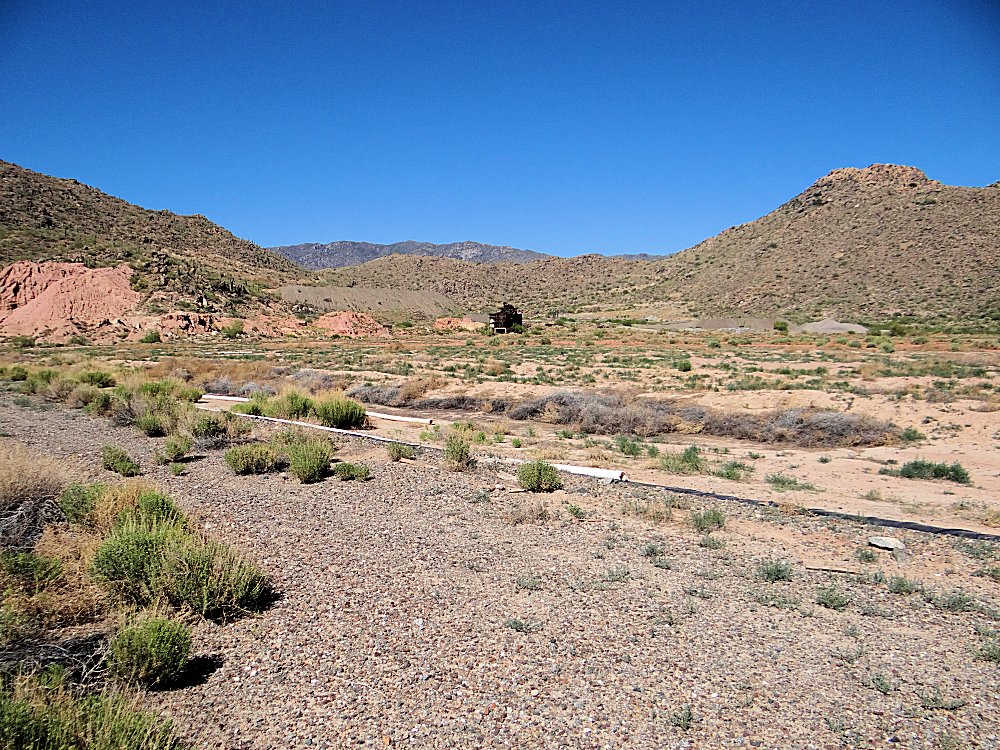 |
| Congress Gold Mine. At The "Mill Town." Congress, Arizona. The Gold Ore Stamp Mill Can Be Seen In The Distance. |
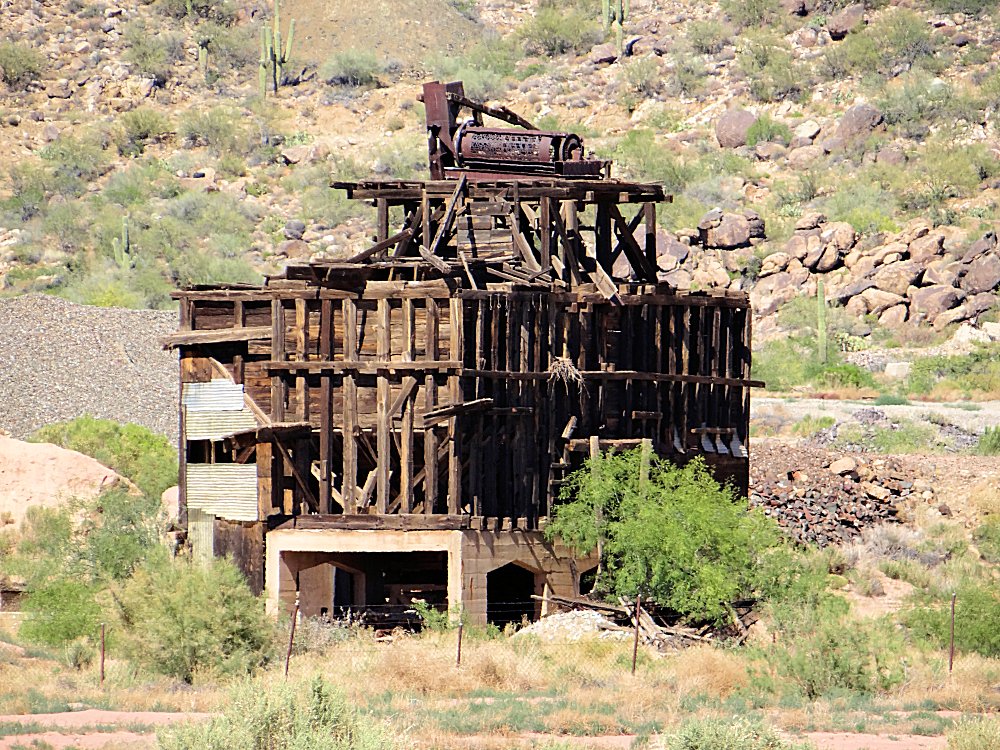 |
| Congress Gold Mine. Gold Ore Stamp Mill At The "Mill Town." Congress, Arizona. |
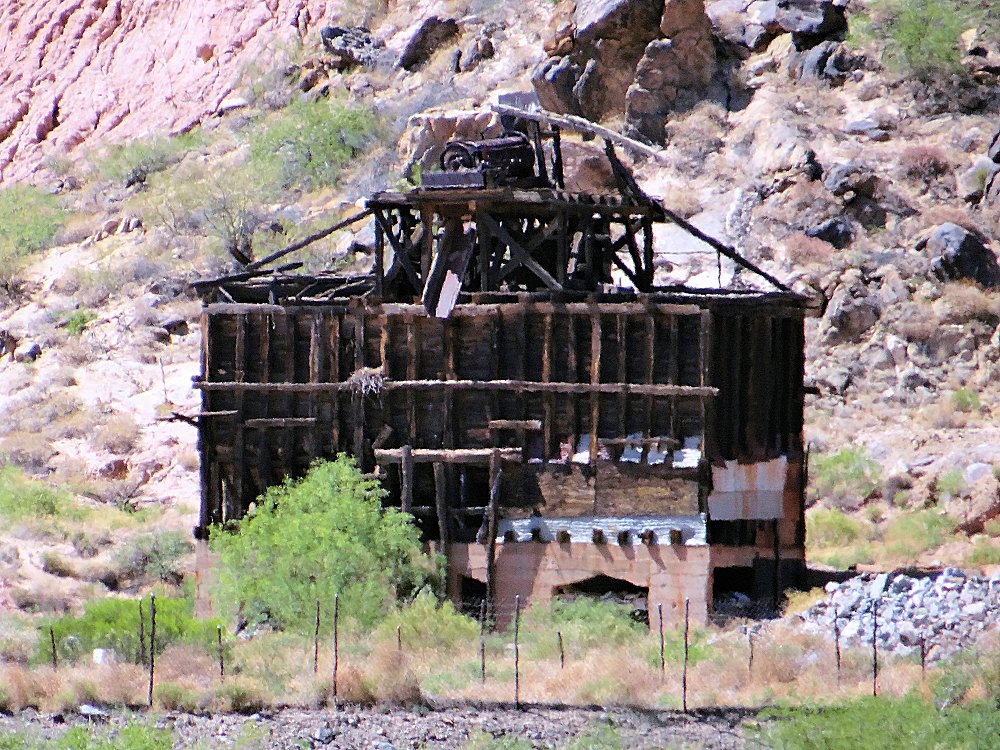 |
| Congress Gold Mine. Gold Ore Stamp Mill At The "Mill Town." Congress, Arizona. |
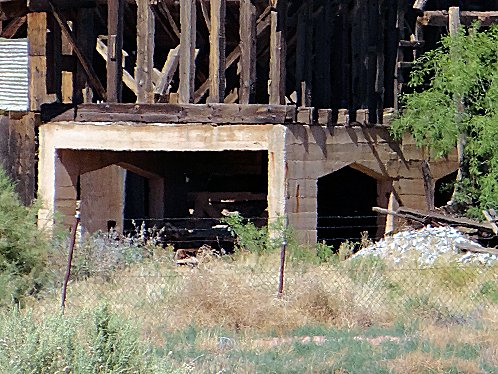 | 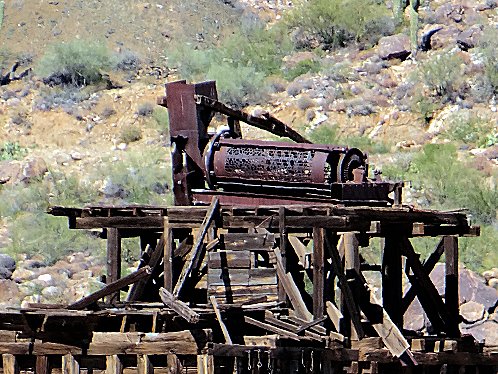 |
| Congress Gold Mine. Gold Ore Stamp Mill. At The "Mill Town." Congress, Arizona. | Congress Gold Mine. Gold Ore Stamp Mill. At The "Mill Town." Congress, Arizona. |
|---|---|
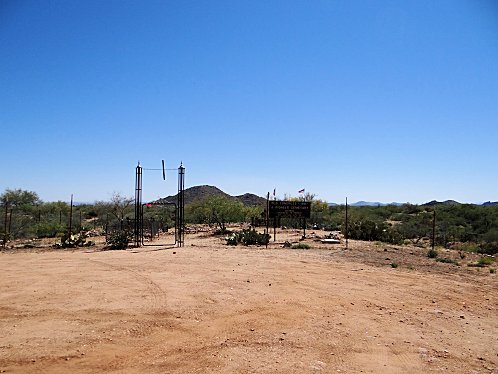 |  |
| Congress Gold Mine. Pioneer Cemetery. At The "Mill Town." Congress, Arizona. | Congress Gold Mine. Pioneer Cemetery. At The "Mill Town." Congress, Arizona. |
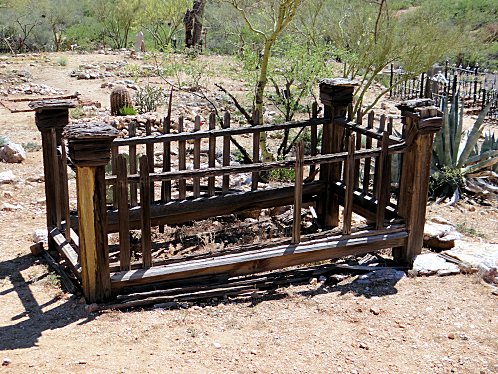 | 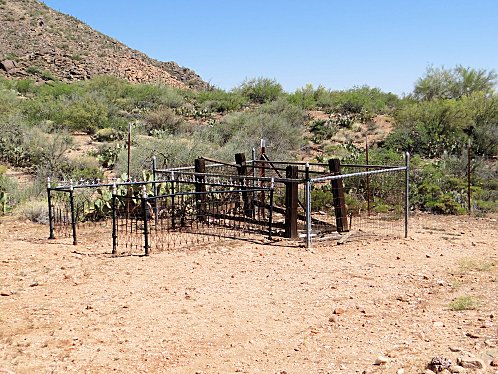 |
| Grave At The Congress Gold Mine. Pioneer Cemetery. At The "Mill Town." Congress, Arizona. | Grave At The Congress Gold Mine. Pioneer Cemetery. At The "Mill Town." Congress, Arizona. |
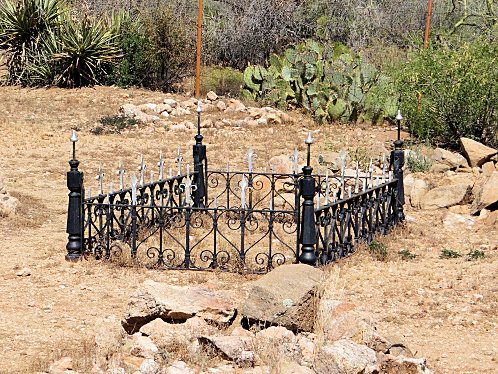 |  |
| Grave At The Congress Gold Mine. Pioneer Cemetery. At The "Mill Town." Congress, Arizona. | Grave At The Congress Gold Mine. Pioneer Cemetery. At The "Mill Town." Congress, Arizona. |
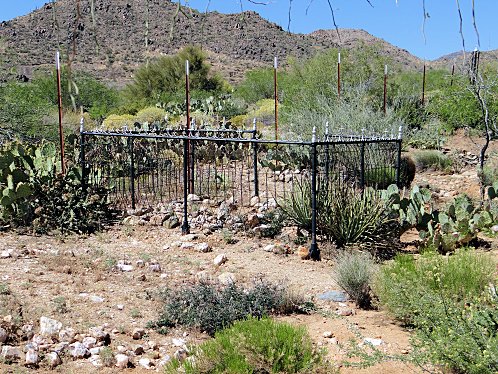 | 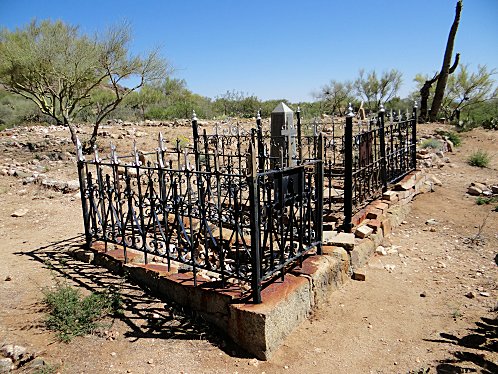 |
| Grave At The Congress Gold Mine. Pioneer Cemetery. At The "Mill Town." Congress, Arizona. | Grave At The Congress Gold Mine. Pioneer Cemetery. At The "Mill Town." Congress, Arizona. |
 |  |
| Grave At The Congress Gold Mine. Pioneer Cemetery. At The "Mill Town." Congress, Arizona. | Grave At The Congress Gold Mine. Pioneer Cemetery. At The "Mill Town." Congress, Arizona. |
 |  |
| Grave At The Congress Gold Mine. Pioneer Cemetery. At The "Mill Town." Congress, Arizona. | Grave At The Congress Gold Mine. Pioneer Cemetery. At The "Mill Town." Congress, Arizona. |
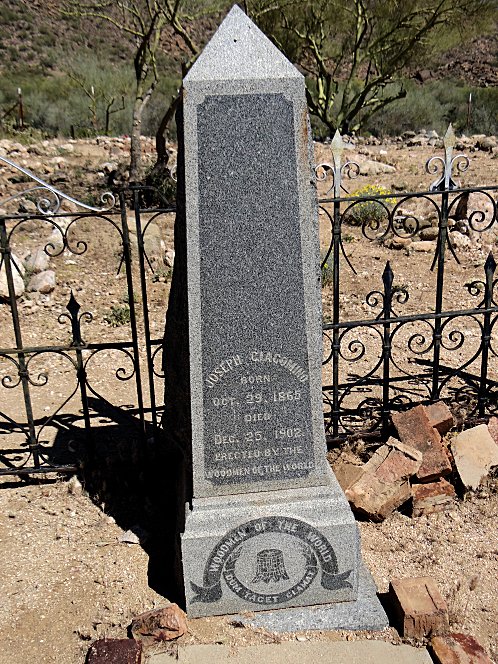 | 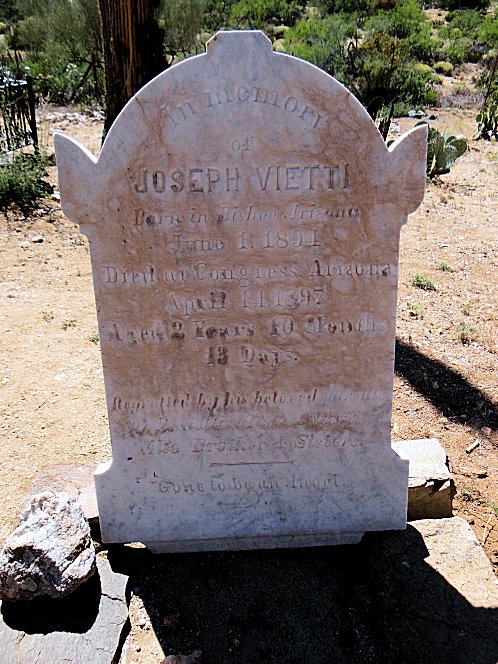 |
| Grave At The Congress Gold Mine. Pioneer Cemetery. At The "Mill Town." Congress, Arizona. | Grave At The Congress Gold Mine. Pioneer Cemetery. At The "Mill Town." Congress, Arizona. |
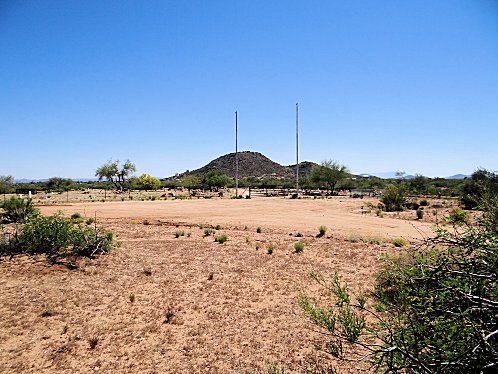 | 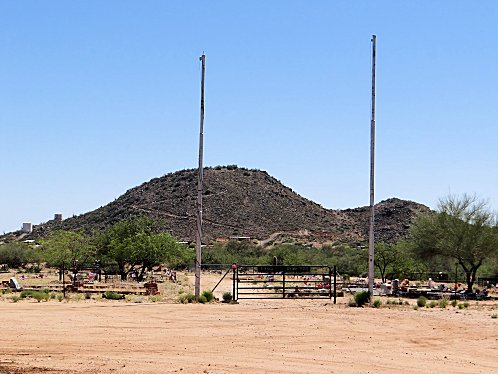 |
| Congress Modern Day Cemetery. Where Some Of Our Family Are Buried. At The "Mill Town." Congress, Arizona. | Congress Modern Day Cemetery. Where Some Of Our Family Are Buried. At The "Mill Town." Congress, Arizona. |
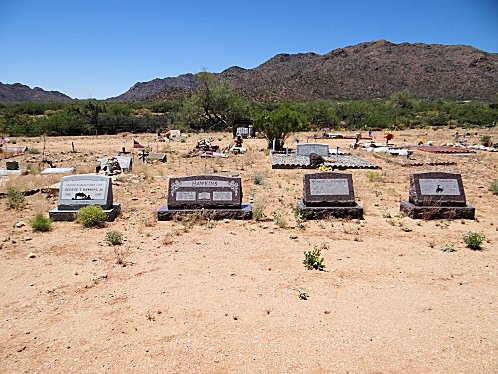 | 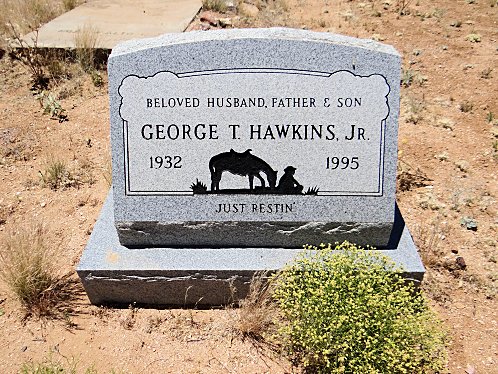 |
| Congress Modern Day Cemetery. Hawkins Family Graves. At The "Mill Town." Congress, Arizona. | Congress Modern Day Cemetery. George T. Hawkins Jr. Grave. At The "Mill Town." Congress, Arizona. |
 | 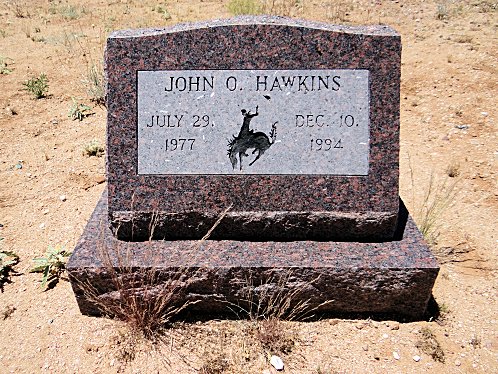 |
| Congress Modern Day Cemetery. George T. Hawkins Sr. & Martha M.Hawkins Graves. At The "Mill Town." Congress, Arizona. | Congress Modern Day Cemetery. John Oliver Hawkins Grave. Named After George DeLange's Grandfather. John Oliver Hawkins. At The "Mill Town." Congress, Arizona. |
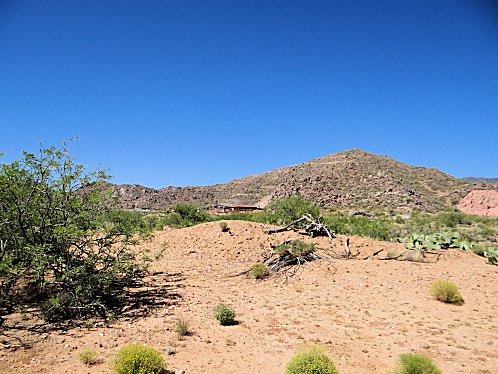 | 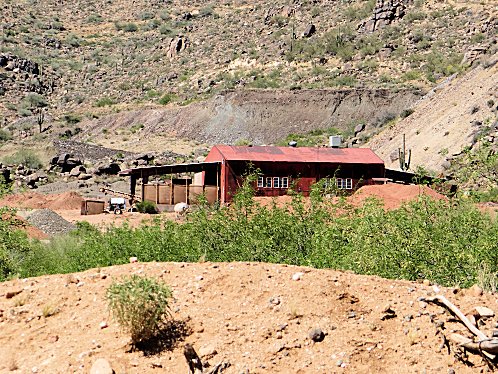 |
| Modern Buildings. At The "Mill Town." Congress, Arizona. | Modern Buildings. At The "Mill Town." Congress, Arizona. |
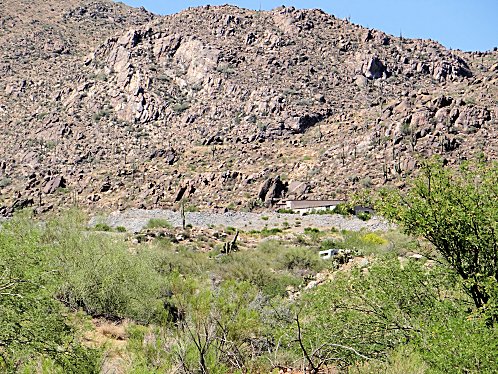 | 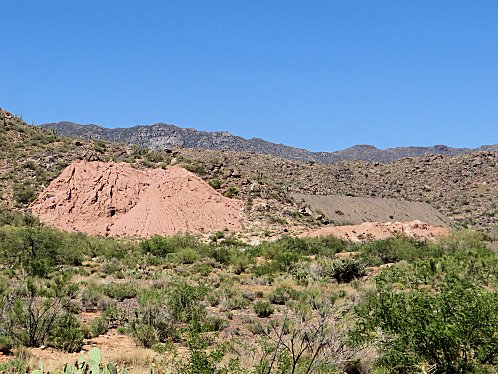 |
| Modern Buildings. At The "Mill Town." Congress, Arizona. | Worked Ore At The "Mill Town." Congress, Arizona. |
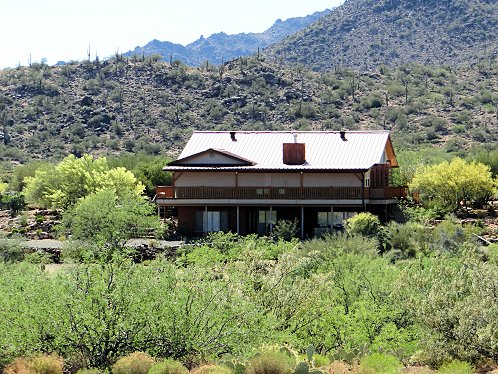 | 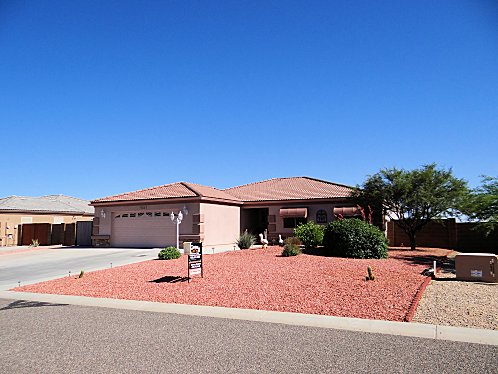 |
| Modern Home. At The "Mill Town." Congress, Arizona. | Modern Home In Weaver Mountain Estates Homeowner's Association. At "Modern Day." Congress, Arizona. |
 | 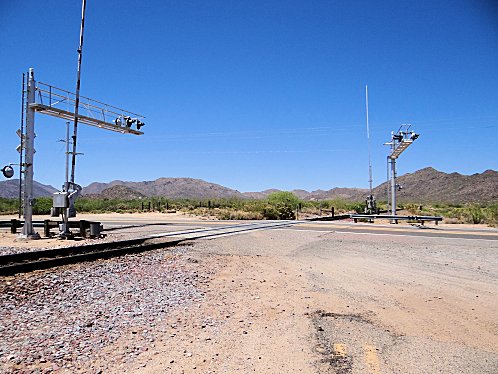 |
| Railroad Tracks At "Old Congress Junction." Where HWY 71 Turns Into HWY 89. Near Congress, Arizona. | Railroad Tracks At "Old Congress Junction." Where HWY 71 Turns Into HWY 89. Near Congress, Arizona. |
 |  |
| "Frog Rock," Or "Rocky The Frog," Near Congress, Arizona. | "Frog Rock," Or "Rocky The Frog," Near Congress, Arizona. |
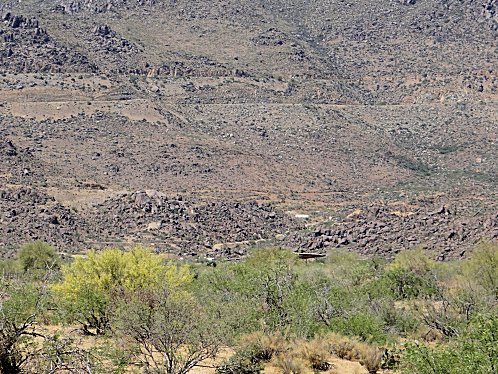 | 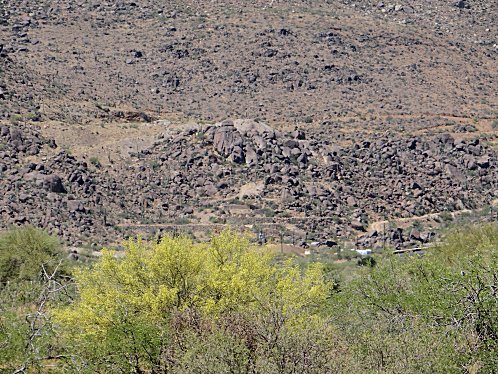 |
| "Fools Gulch" Gold Mine. At Bottom Of Yarnell Hill. Near Congress, Arizona. | "Fools Gulch" Gold Mine. At Bottom Of Yarnell Hill. Near Congress, Arizona. |
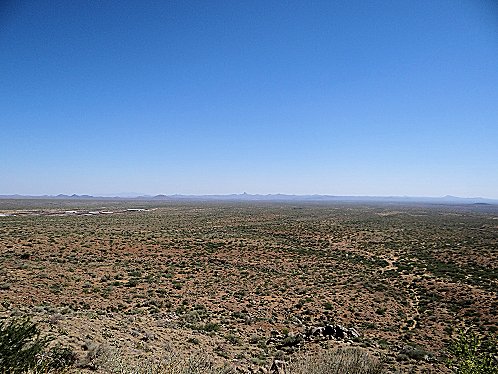 |  |
| "Vulture Peak," Near Wickenburg, Arizona. Location Of The "Vulture Gold Mine." From Yarnell Hill, Located Near Congress, Arizona. | "Vulture Peak," Near Wickenburg, Arizona. Location Of The "Vulture Gold Mine." From Yarnell Hill, Located Near Congress, Arizona. |
We Buy Our Hard To Find Fruit Trees For Yarnell, Arizona At Nature Hills Nursery.
We Have Several Nice Fruit Trees Growing In Yarnell, Arizona.
But, We Have Family Who Also Grew Them Near Congress, Arizona.
They Will Do Well In Other Similar Elevations In Arizona. ie.. Prescott, Cottonwood, Camp Verde, Sedona.
Cameo & Fuji Apples! Yummm! Click The Nature Hills Nursery Link To View.



Congress, Arizona:
We wish to thank Wikipedia, the free encyclopedia for some of the information we have on our page about Congress, Arizona. We share information & images with Wikipedia. We wish to also credit A Presidental Tour: President McKinley Visits The Congress Gold Mine By Robert L. Spude for some of the information about President McKinley's visit to the Congress Mine. Some of our information was obtained from some of the Author's (George DeLange Family) (Members Of The Hawkins Side Of The Family); who lived in the area of Congress for many years. Some of the Hawkins Family are buried in the Congress Cemetery. Congress is located on the Highway 89, Scenic Route to Prescott, Arizona. In Yavapai County. Congress is at the bottom of Yarnell Hill, & is one of the communities to visit as you tour the American Heritage Trail route. Congress is also located on Highway 71. In fact it is where State Highway 89 and State Highway 71 meet, at the base of the Date Creek Mountains. Congress is located to the Southwest, of the bottom of Yarnell Hill, at an elevation of about 3,045 feet. It is surrounded by huge boulders, & old, rich gold mining claims. Its vegetation is mainly mid - desert, mesquite, catclaw, & cactus. The climate is mild all year round; with its lowest average minimum temperature at 37.5 degrees F, & its highest average maximum temperature at 99.4 degrees F. Congress is about 70 miles northwest of Phoenix, 16 miles north of Wickenburg, and 43 miles south of Prescott. Gold was discovered at Congress in about 1884. Later on in 1893, the Santa Fe Railroad passed within 3 miles of the Congress mine. The place where the railroad crossed was called Congress Junction. The town of Congress quickly grew, and remained prosperous until in about the mid-1930s, when the gold mines closed. The total gold production at the Congress Mine exceeded 387,000 ounces or about $ 8 million, at the then-current price of about $ 20.67 per ounce�or about $ 526 million, at the May 05, 2013 gold price. One of the most memorable events at the Congress Mine was the visit of May 07, 1901 by President William McKinley. He arrived at Congress Junction at 8:13 a.m. and a locomotive of the Congress Gold Mining Company pulled his train to the mine. The Congress post office moved to Congress Junction in 1938, where it remains to this day. The community now known as Congress is the old railroad Congress Junction. Very little remains of the original Congress townsite. Today Congress, a gold-mining, ghost town, slowly continues to grow, as it serves the needs of tourists and area residents, many of whom are retired, or work in nearby Wickenburg. Its population was 1,717 at the 2000 census.
History Of Congress, Arizona:
Our story starts with Pauline Weaver; who was a mountain man, a trapper, military scout, prospector, explorer and a key figure in Arizona's history. Around April 1, 1863, Pauline Weaver led the Abraham T. Peeples party up the Hassayampa River in search of gold. About 30 miles south of Prescott they discovered nuggets of gold lying on the ground on top of a knoll that became known as Rich Hill. Note: The author of this page has prospected on "Rich Hill," & has also found several ounces of gold near "Rich Hill!" This was in 2008. Weaver did not strike it rich, but he established a ranch at Walnut Grove. However, their finding of gold did start a "Gold Rush" into the area from about Prescott south to Wickenburg, Arizona. Then on March 25, 1884, Dennis May discovered gold near where the town of Congress is located today. In 1887 The Congress mine was formed and the town was given the name, Congress. Then a man; Joseph "Diamond Jo" Reynolds; comes into the scene. Joseph "Diamond Jo" Reynolds was a successful steamboat operator from Chicago, Illinois. He gained the name "Diamond Jo" by marking his steamboats with the name "Jo" surrounded by a diamond. He was commonly called: "Diamond Joe." "Diamond Joe" Reynolds purchased the mine from Dennis May in 1887. "Diamond Joe" then expanded the production of the Congress Gold Mine. "Diamond Joe" Reynolds, died of pneumonia, at the age of 71, on February 21, 1891 in his tent at the Congress Mine in Congress, Arizona. His estate was valued at between $8 and $10 million completely debt free. His estate included real estate, steam packets, grain elevators, mining properties in Arizona, California, Colorado, Kansas, Illinois, Iowa and Missouri, and the Hot Springs Railroad, a 24 mile long narrow gauge line running from Malvern, Arkansas to Hot Springs, Arkansas. Can you imagine living in a tent, with that kind of wealth, in those days? An entrepreneur named Frank M. Murphy then became one of the principal owners of the Congress Gold Mining Company in the early 1900's; after the death of "Diamond Joe" Reynolds. Frank M. Murphy, and the other members of the group of entrepreneurs then worked together to make the mine more profitable. Congress became a growing mining town with a school, telegraph and hospital. There were two sections of town. The �Mill Town� and the �Lower Town.� The �Mill Town� was were the mining operations took place and the �Lower Town� was the business and the new home section. The "Mill Town" closer to the mine, featured the mill, company offices, a hospital and residences. The "Lower Town" was located farther south, with the commercial district, restaurants, stores and saloons, two churches and a school. Congress even had its own electric light plant. But, as with most towns of this age, water was scarce. Since the town had trouble with its water supply. In 1898 and again in 1900, when fires broke out, many buildings were destroyed. During the town�s boom, it was estimeated that there were 500 people living in Congress. In 1938 the mine closed. Soon Congress shut down and the town of Congress Junction dropped Junction from its name and became just Congress.
The story of Congress also has a lot to do with the rival railroads that helped open up the Arizona Territory. The Southern Pacific Railroad built its way across the southern part of Arizona between 1877 and 1880. The Atlantic & Pacific Railroad Railroad, controlled by the Santa Fe Railroad, built across the northern part of Arizona between 1880 and 1882. Early in the 1890s, the entrepreneur & principal owner, of the Congress Gold Mining Company; named Frank M. Murphy built the Santa Fe, Prescott & Phoenix Railway, connecting the two regions of Prescott & Phoenix, Arizona. It was also called �The Peavine;� because of the torturous path it had to take to get from Prescott to Congress. On March 14, 1895 the railroad finally was completed to within three miles of Congress, & Congress was booming. Where the railroad arrived, three miles from Congress, was called: "Congress Junction." It was the official rail stop for the Santa Fe, Prescott and Phoenix Railroad.
History Of Congress, Arizona On May 7, 1901 at at 8:13 A. M.; President William McKinley arrived by train into Congress, Arizona, to view the Congress Gold Mine! The first question to ask; Is Why Would He Do Such A Thing? Why did McKinley visit a gold mine, and why the Congress Gold Mine? Well, It's not a simple answer! But, when thought about, the politics is obvious!
Here is some of the background information that was considered:
1. But the Congress Gold Mine was also impressive and was territorial Arizona�s most productive "Gold Mine." 2. And the history of the Congress Gold Mine exemplified the 1890s McKinley era theme of industrial progress. "Stimulated by New Investment In Technology!" Recall that the poor prospector Dennis May had wandered the hills of southern Yavapai County since the 1860s, scratching and digging its rugged outcrops. He finally hit it big when he staked the Congress mining claim in 1884. Then it became richer as he dug into the Congress lode. Then three years later Prescott mine promoter Frank Murphy brokered the sale of May�s claim to colorful Chicago steamboat and railroad magnate Joseph �Diamond Jo� Reynolds. Then by 1890, the Congress Gold Mine, with Frank Murphy as its superintendent, was opening up a bonanza and the mine was becoming the showcase of Yavapai County. Also, when a Prescott reporter visited Congress in 1890, he wrote; �The Congress stands as a tribute written and riven deep into the rugged tablets of the Bradshaws, to the sagacity of Jo Reynolds and the energy, skill, and good judgment of his superintendent, F. M. Murphy.� Recall that Joseph "Diamond Jo" Reynolds desired to reduce the cost of shipping concentrates from the mill and proposed a railroad be built from Prescott to Phoenix, via Congress. Then tragedy struck. The seventy-two year old Reynolds died while on a visit to the mine. Operations at the mine halted, Murphy hung up the stamps in the mill, and concentrated on building the Santa Fe, Prescott & Phoenix Railroad. Well then, Frank and Oakes Murphy, through their millionaire �uncle� Simon Murphy, well connected with the Republicans of Michigan, brought in a new group of Midwestern investors to push the railroad through Prescott, to the Congress Mine in 1894, and completion to Phoenix in 1895. While Frank Murphy�s energies were focused on the railroad, the Reynolds estate decided to sell the mine. Speculators from Tombstone, Arizona; led by E. B. Gage - bought the Congress Gold Mine. Then in 1901, the company was reorganized as the Congress Consolidated Mines Company, Ltd., which was basically a re-selling of the mine to the old owners, for a reported $3,000,000, but offering stock to new investors. E. B. Gage then moved in with an experienced crew from Tombstone, Arizona. Frank Murphy helped Gage and his partners rapidly increase production by channeling new money into a major plant expansion between 1899 and 1901. The program increased the mill to 80 stamps and extended the main shaft to 3,050 feet, deepest in the Southwest. Within 3 years, the Congress Consolidated Mines Company, Ltd. was producing about three-quarters of a million dollars worth of gold annually So it could be easily argued that new investment and new technology had made the Congress Consolidated Mines Company, Ltd. And the same could be said for a number of other Yavapai county gold mines during the lat 1890's & early 1900's. The move of many former silver mine owners and miners from Tombstone to Yavapai County in the 1890s, helped stimulate the mining industry. During that time, mines from the Crown King District to the Fools Gulch, camps rapidly expanded. Gold mines, such as; the Crown King, Henrietta, Hillside, McCabe, Oro Belle, Poland, & Senator mines each became highly respectable gold producers as Yavapai County�s gold production exceeded up to three million dollars annually. 3. Then there was the new mining technology. The Cyanide Process & Access To Smelters. Gold cyanidation (also known as the cyanide process or the MacArthur-Forrest process) is a metallurgical technique for extracting gold from low-grade ore by converting the gold to a water soluble coordination complex. It is the most commonly used process for gold extraction. Due to the highly poisonous nature of cyanide, the process is controversial and its usage is banned in a number of countries and territories. Gold ore is comminuted using grinding machinery. Depending on the ore, it is sometimes further concentrated by froth flotation or by centrifugal (gravity) concentration. Water is added to produce a slurry or pulp. The alkaline ore slurry can be combined with a solution of sodium cyanide or potassium cyanide, however many operations utilize calcium cyanide, which is more cost effective. The gold is then in a solution that can be electroplated out onto steel plates and scrapped off and further refined. The cyanide process made the Congress Consolidated Mines Company, Ltd. profitable &access; to smelters which reduced concentrates, and other new technologies aided the revival, as did new investment. The cyanide process,Midwest investors funded speculative mining operations and built railroads--the Prescott & Eastern to Mayer and the Bradshaw Mountain to Poland and Crown King. All of this made a tour of the tour of the Congress Consolidated Mines Company, Ltd.; a must do! Unfortunately; what wasen't expected, or known at that time was that over-speculation and outright fraud hurt the industry, which took a major downturn with the financial panic of 1907 and then thirteen-year gold boom would come to an end!
Again, one has to ask, why did President McKinley visit the Congress Mine? Obviously, the lure of a prosperous gold mining operation in the West, especially one that thrived after the mining depression of 1893, was an allure. The President�s quip about the gold standard was indicative of his stand on the monetary issue. Stopping at a prosperous gold mine and having its photograph pasted across the pages of the nation�s press enforced his belief; prosperity returned on a solid gold foundation. In March 1900, upon the request of the President, the U. S. Congress had passed the gold standard bill, a campaign promise of 1896 that meant every dollar was backed by gold. Recall, a decision earlier, in 1893, to not provide Federal support for silver; caused silver to plummet in market value, from over a dollar an ounce to fifty cents. Silver mines closed across the West but gold mining boomed. Visiting a gold mine was a positive statement that the mining industry was healthy. Also, visiting a �safe� mine, one without labor troubles or fraud was important to the McKinley Administration. McKinley Republicans also had many ties to the Congress Consolidated Mines Company, Ltd.; even his friends in Ohio were involved. Such as the Arms family of Youngstown -- not far from McKinley�s hometown of Canton -- was a major stockholder in the Congress Consolidated Mines Company, Ltd.! There were numerous others! Also recall that Frank M. Murphy had arranged the tour of the mine as publicity for his own business interests. Wall Street knew, a Presidential visit would mean positive press for a property, and Murphy and his partners were ready to take advantage of the free publicity in order to expand their operations. There were numerous other considerations!
The new Congress Consolidated Mines Company, Ltd. physical plant was in fine working order when the Presidential party arrived for their visit !! Nearly all of the one thousand inhabitants of Congress � in addition to brass bands, people from Tucson, Prescott and Phoenix, as well as photographers and newsmen, congregated at the Congress Gold Mining Company�s store to welcome the Presidential entourage. On May 7, at 8:13 a. m., the crowd burst into a frenzy of cheers, brass band clatter, steam whistles, and exuberant cries when the train came chuffing up the tracks on Main Street. The President, already on the Olympia�s platform, immediately began, in the words of one reporter, �shaking hands with those more accustomed to wielding a pick and shovel or operating an air drill in the workings of the Congress mine.� Author John W. Sayre tells the story of that day in his excellent book, �The Santa Fe, Prescott and Phoenix Railway: The Scenic Line of Arizona.� We highly recommend reading his story of that day!
Congress Mine Ore; Mining Method Descriptions, & Mining Production Statistics:
The host rocks are made up of coarse-grained biotite granite, they are intruded by aplite, pegmatite and greenstone dikes. The mines mineralization consists of three major veins: the Congress vein; the Niagara vein; and, the Queen of the Hills vein. These occur within fault fissures that strike generally toward the west and dip toward the north. The Congress vein or fissure occurs mainly in a greenstone dike about 15 feet thick. The fill in the vein is made up of coarse-textured, massive, grayish-white quartz with irregular masses, bands & disseminations of fine-grained iron sulfide. The ore zones are generally flat lenses near the footwall. The longest ore zone at the 650 level was about 1,800 feet long and it was 3 feet thick, or sometimes less in thickness. The Niagara vein goes downward tofor about 2,000 feet and it contains a small amount of galena and it has a higher silver content to it. The Congress Gold Mines workings include 7 shafts, all are sunk on inclines. Three shaftes were located on the Congress vein: (No. 1 shaft, about 1,100 feet); (No. 2 shaft, about 1,700 feet); (No.3 shaft about 4,000 feet). Also 3 shafts were sunk on the Niagara vein: (No. 4 shaft, about 1,000 feet); (No. 5 shaft, about 2,050 feet); (No. 6 shaft, about 1,800 feet). Also One shaft was sunk on the Queen and Hills vein to a depth of about 200 feet below the level of the tunnel. These shafts were sunk at an approximate incline of 25� from the horizontal. At first a 20-stamp mill with a Frue-vanner table for concentrating was in use, and later on, a 40-stamp mill and additional vanner tables was added. It is estimated that 687,542 tons of ore were milled yielding 388,477 oz. of Gold and 345,598 oz. of Silver. At the Gold Price of May 21, 2013 1:30 AM; that would be $541,530,078.20 for Gold, & $7,869,266.46 for Silver!
Congress, Arizona Today:
The part of Congress that most of us see as we drive by the town is what used to be called; the �Lower Town� which was the business and the new home section of the older Congress. It is what used to be called; Congress Junction. Today Congress is a basically a shee,p and cattle shipping center. If you travel a couple miles to the north of Congress, you can see some of the ruins of the old gold mining town. It is definately a nice attraction. There are also several homes in the area, but hardly any of the old "Mill Town," is left standing! Another attraction of Congress is the thrill of one being able to ride a motorcycle up or down Yarnell Hill. This makes Yarnell Hill a "Mecca" to the hundreds of motorcycle riders that love to ride through Congress, & Yarnell to other areas of Yavapai County just about every week of the year. The "Ranch House Restaurant", in Yarnell is one of the favorite eating establishments for these bikers as well as just about anyone else in the area. However, there are several other restaurants that welcome "bikers" in Yarnell. Several articles about Congress, say that Congress' post office was established on January 19, 1889 and discontinued August 31, 1928. But we are glad to say that it has a post office today! There is a" lookout point" just northeast of Congress on U. S. Highway 89. Unfortunately you can only get to it by going up to Yarnell and back down towards Congress; before you begin your descent down into the Valley below. This is definately worth visiting. This view from U. S. Highway 89 travels four miles and drops 2,500 feet down the side of Table Top Mountain. The lookout point provides a panoramic view of the desert regions below. It is a view you won�t soon forget. You will want to stop and marvel at the sight below. About half way down Yarnell Hill on U. S. Highway 89, you will see a white elephant painted on the rocks to the right side of the road. This is at a bend in the road that "bends like an elephants trunk." Thus, the white elephant on the side of the highway! This popular attraction is called, "Scooby The Elephant" or "Elephant Bend." The Arizona Highway Department calls it "grafitti" and tries to paint it over, but the local residents put "Scooby" back on the rocks where he belongs! The local paramedics use "Elephant Bend" as a location marker when they are dispatched to the aid of some unfortunate soul that needs their help. ie.."Below The Elephant or Above The Elephant." Continuing down Yarnell Hill, you will notice a green frog on the west side of Highway 89 a little bit across from the Arrowhead Bar And Resturant. His name is "Rocky The Frog," or "Frog Rock," and he has a story that he can tell. "Rocky" was painted by Sara Perkins. Sara and her husband Eli Perkins, a newspaper man and state legislator, had taken up residence on Martinez Wash near the present day Arrowhead Bar And Restaurant. Sara had taken her sons out exploring the area and she soon discovered that there was a rock formation nearby that looked like a frog. It wasn't too long until Sara had painted the rocks bright green with black spots and a white underbelly. Later, in 1928 Highway 89 was built nearby and ever since then there have been numerous tourists stopping to photograph this unusual rock formation. A little known fact is that, a man and his faithful dog, are buried next to the "Rocky." The man's name is, William Miller. He requested to be buried next to "Rocky." Mr. Miller passed away on January 19, 1940. If you visit our busineses link on this page you can see some of the businesses and other services in Congress.
|
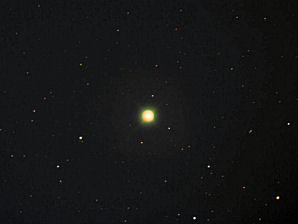 | 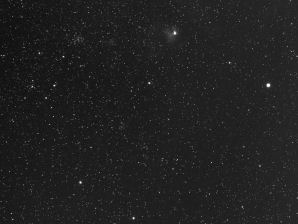 |
| Comet Holmes 24 Oct 2007 In The Black Sky From Nearby Yarnell, AZ Using Hand Cranker & Telephoto Lens. | Comet Holmes 25 Oct 2007 From The Black Sky From Nearby Yarnell, AZ Using Hand Cranker |
|---|---|
 |  |
| Comet Hale Bopp 21 Mar 1997 From Nearby Hillside AZ Early Morning Photo. | Comet Hyakutake 21 Mar 1996 From Black Sky South Of From Nearby Yarnell, AZ. |
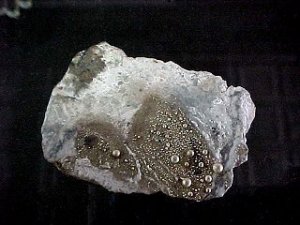 | 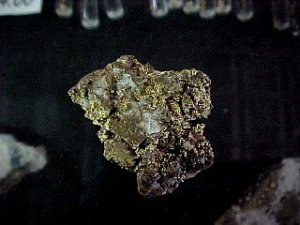 |
| Theres' Gold In Them There Hills Found In Congress Arizona. | Rich Hill Gold Just 6 Miles East Of Congress. |
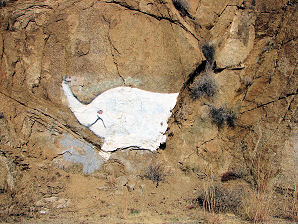 | 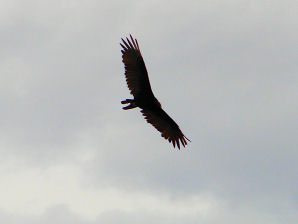 |
| "Scooby" "Elephant Bend" AKA "The Republican Bend" On Yarnell Hill Road Arizona 89 Near Congress, AZ. | Yarnell Buzzard Near Congress, AZ. |
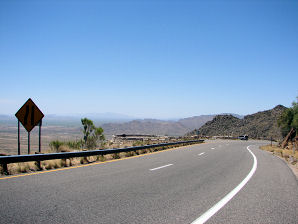 |  |
| Yarnell Hill (Table Top Mountain) Lookout Point. Near Congress, AZ. | Yarnell Hill (Table Top Mountain) Lookout Point. Near Congress, AZ. |
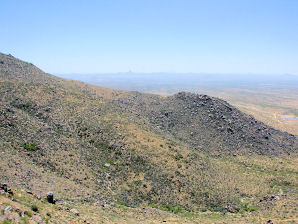 | 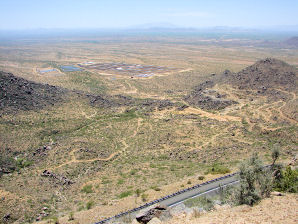 |
| Vulture Peak From Yarnell Lookout Point. Near Congress, AZ. Look In The Far distance To The Site Of The Vulture Gold Mine. | The Old Parker Dairy Farms & The Fools Gulch Gold Mine. From Yarnell Lookout Point. Near Congress, AZ. |
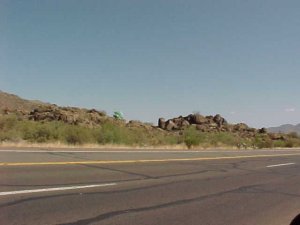 | 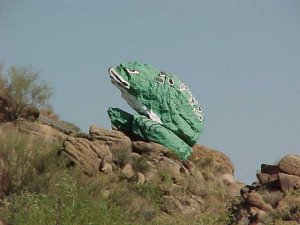 |
| "Frog Rock" Or "Rocky The Frog." Near Congress, AZ. Just Below Yarnell Hill On U. S. Highway 89 | "Frog Rock" Or "Rocky The Frog." "I'm over 80 years old!" I Was First Painted By Sara Perkins! |
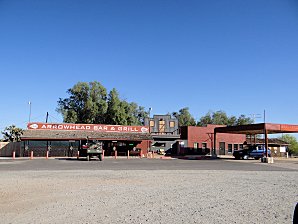 | 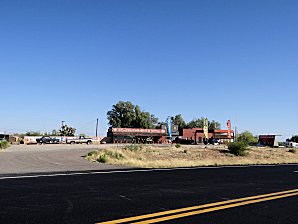 |
| 2013 Photo Arrowhead Bar & Grill. Across From "Rocky The Frog." | 2013 Photo Arrowhead Bar & Grill. Across From "Rocky The Frog." |
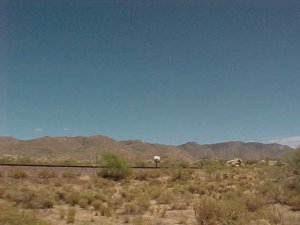 | 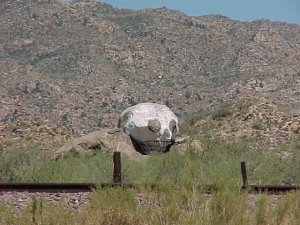 |
| "What's That White Object In The Distance?" Near Hawkins Arizona. Also Near Congress, AZ. | The "Skull", "Poor Yorick" 5 Miles West Of U. S. Highway 89 On The Date Creek / Hillside Road Yavapai County Rd. 62. Also Near Congress, AZ. |
 | 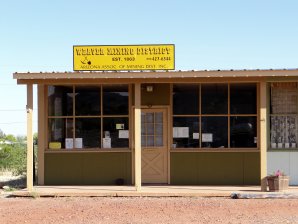 |
| New Weaver Mining District Offices Located Below Yarnell Hill. In Town Of Congress. | New Weaver Mining District Offices Located Below Yarnell Hill. In Town Of Congress. |
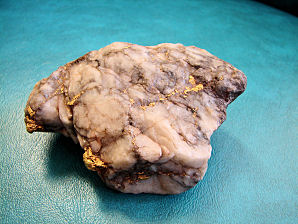 | 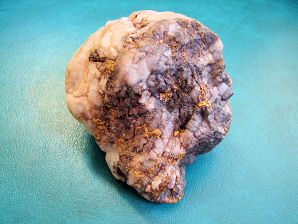 |
| Weaver Mining District Gold. | Weaver Mining District Gold. |
Links To Local Features & Attractions
| Congress Businesses & Services | Rich Hill & Weaver Placer Gold |
We Are Proud Of Our SafeSurf Rating!
Click On Any Of The Following Links By Amazon.Com
For Gold Prospecting Equipment For Arizona. No Obligation!
Click On Any Of The Following Links By Amazon.Com
For Books, & Equipment For Hiking & Gold Prospecting, In Arizona. No Obligation!
Click On Any Of The Following Links By Amazon.Com
For Camping Gear. No Obligation!
Back To Arizona Tours Page
Back To DeLange Home Page
For Camping Gear. No Obligation!
| Back To Arizona Tours Page
|
| Back To DeLange Home Page
|




